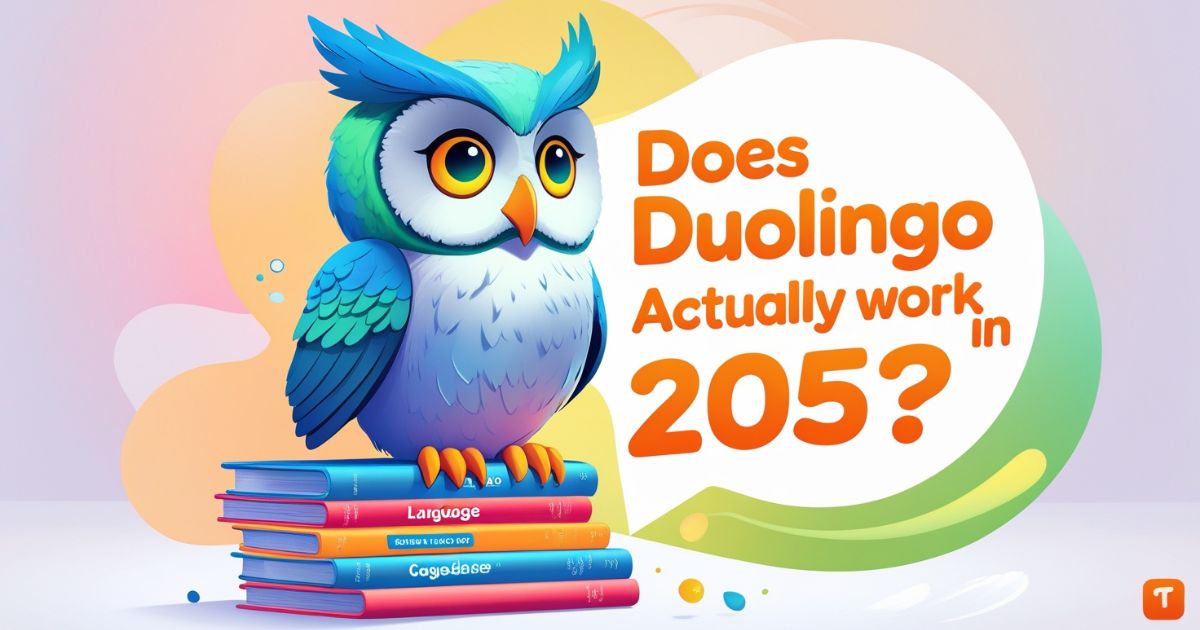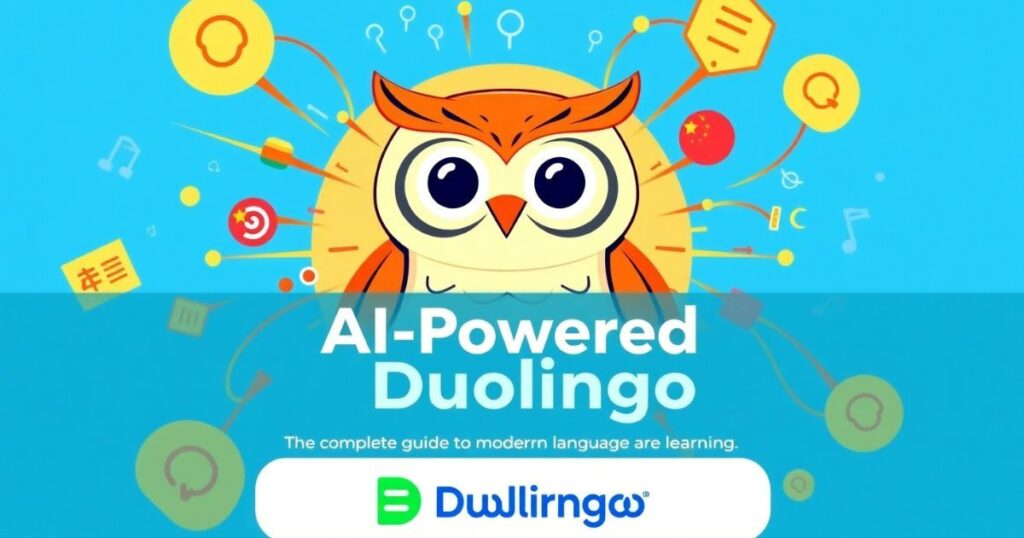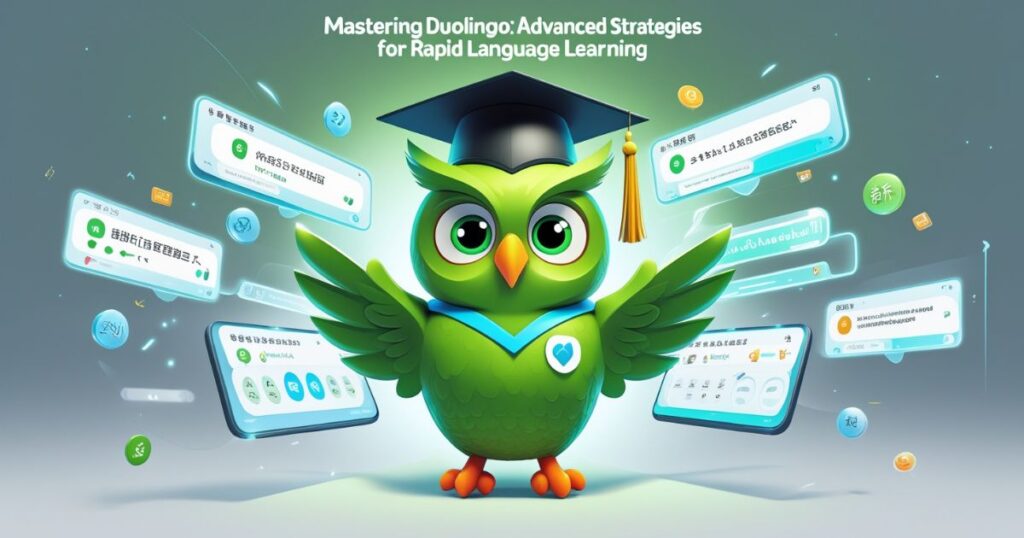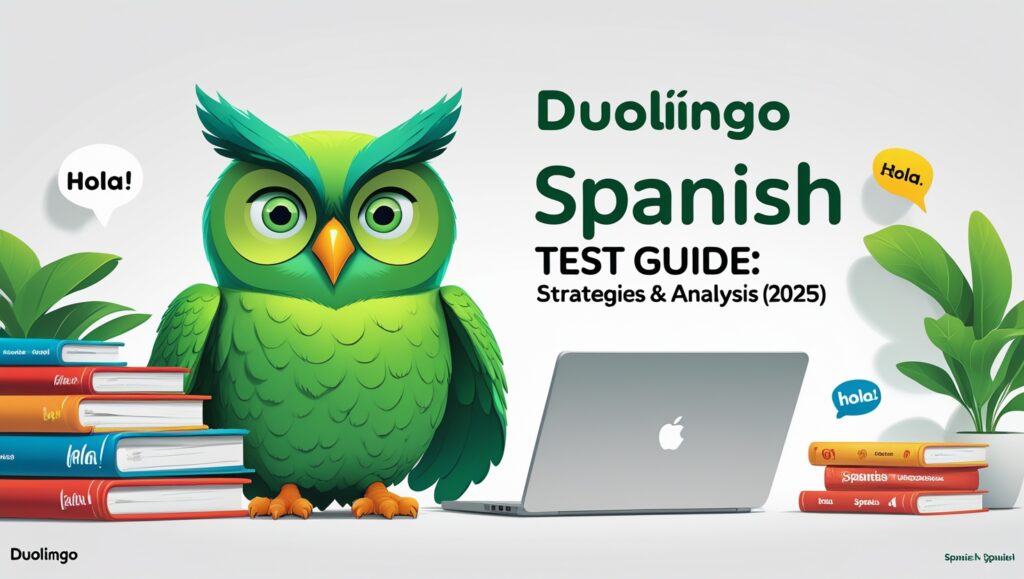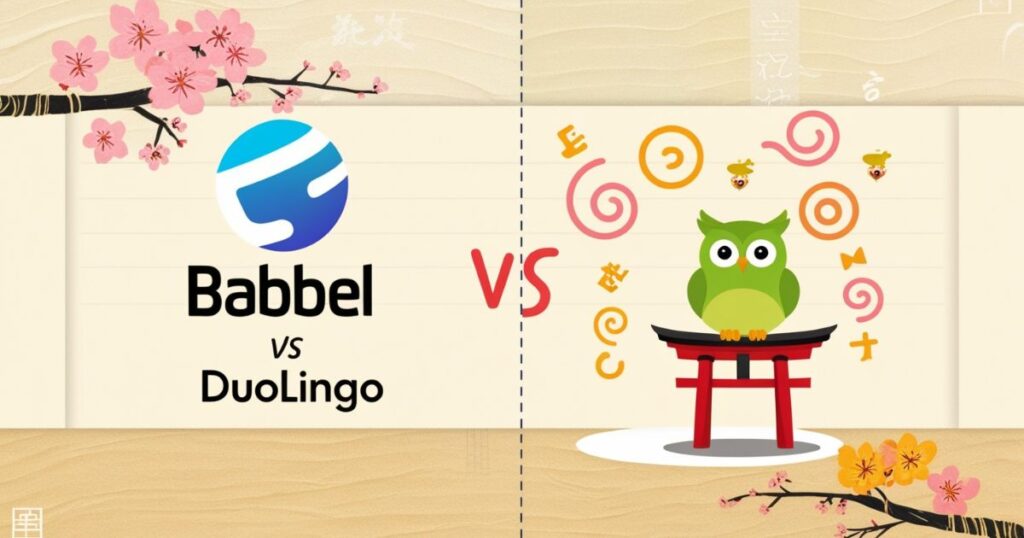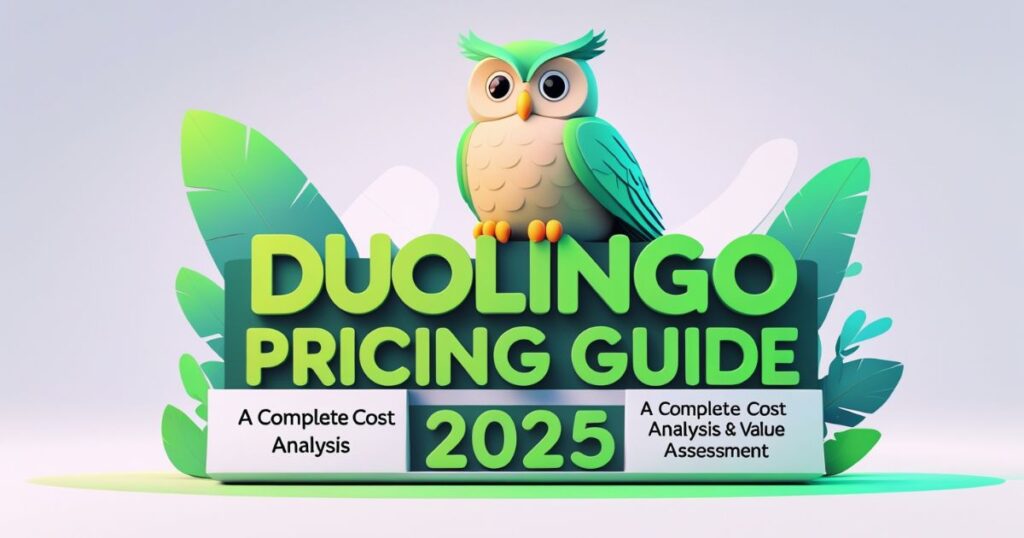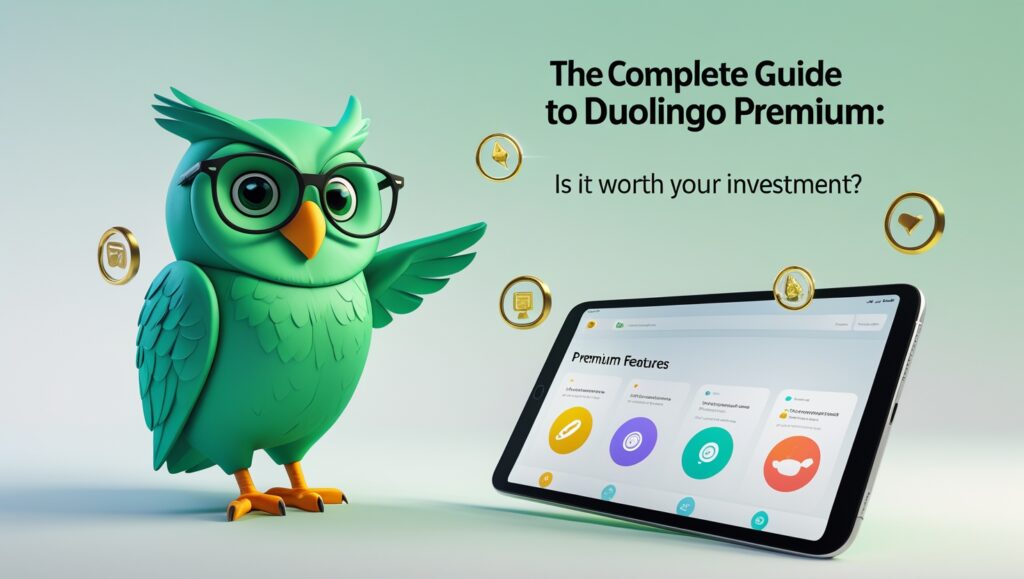In today’s interconnected world, the desire to learn a new language has never been stronger. As digital solutions revolutionize education, Duolingo has emerged as a leading language learning app, promising to make language acquisition accessible, engaging, and free. But the crucial question remains: does it actually work?
Understanding Duolingo’s Learning Approach
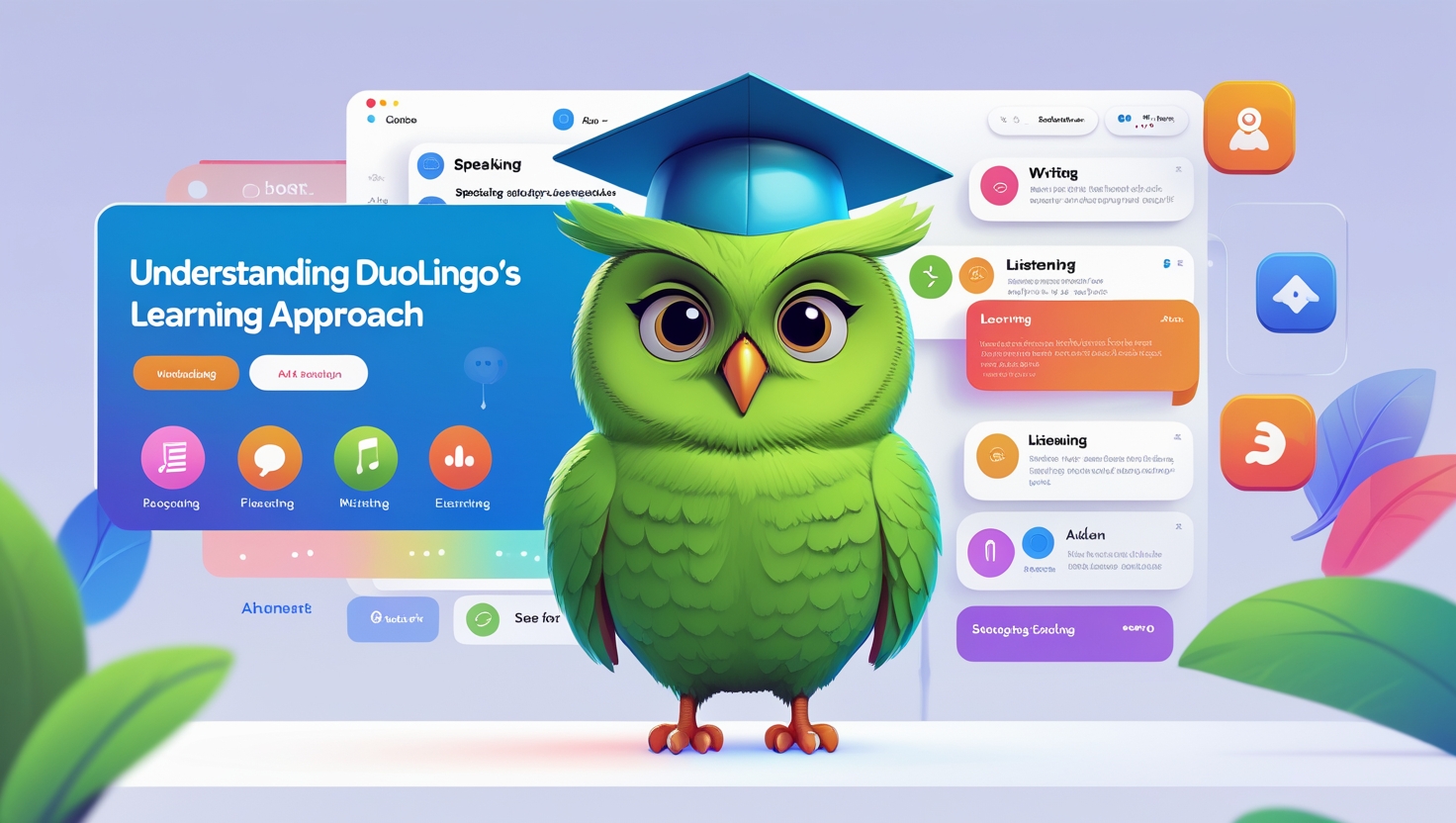
Duolingo transforms traditional language learning through innovative gamification and bite-sized lessons. The platform employs a scientifically-backed approach combining spaced repetition and interactive exercises to optimize learning retention.
How Duolingo’s Language Learning System Works
Duolingo actually works through a unique, progressive learning system that focuses on skill trees, designed to introduce new language concepts in a systematic and structured manner. This approach helps learners gain fluency step by step. Each lesson includes various interactive features like translation exercises, speech recognition technology, listening practice, and multiple-choice questions, all of which ensure engaging and effective learning for users of all levels.
The Science Behind Teaching Methods
Duolingo’s effectiveness is rooted in cognitive science principles:
| Learning Principle | Implementation | Benefit |
| Spaced repetition | Scheduled review of concepts | Improved long-term retention |
| Gamification | Points, streaks, achievements | Enhanced motivation |
| Microlearning | 5-10 minute lessons | Reduced cognitive load |
| Immediate feedback | Real-time corrections | Faster skill acquisition |
Measuring Duolingo’s Effectiveness for Language Learning
Research indicates that Duolingo can be particularly effective for developing certain language skills. A 2024 study showed that users who completed 100 hours of Spanish lessons achieved reading comprehension levels comparable to four university semesters.
Skill Development Breakdown
Reading Skills:
- High effectiveness (85% success rate for basic comprehension)
- Strong vocabulary retention
- Consistent grammar pattern recognition
Listening Skills:
- Moderate effectiveness (70% success rate)
- Good for basic comprehension
- Limited exposure to varied accents
Speaking Skills:
- Lower effectiveness (55% success rate)
- Basic pronunciation practice
- Limited open-ended conversation opportunities
Writing Skills:
- Moderate effectiveness (65% success rate)
- Strong in basic sentence construction
- Limited creative writing practice
The Pros of Learning Languages with Duolingo
Accessibility and Cost Benefits
- Free and accessible core platform
- Available across multiple devices
- No commitment required
- Optional Duolingo Plus for enhanced features
Gamification Elements
The platform’s gamified learning approach includes:
- Daily streaks and achievements
- Level progression systems
- Competitive leaderboards
- Virtual currency (Lingots/Gems)
Consistency and Habit Formation
Language proficiency development is supported through:
“Consistency is the key to language learning success. Duolingo’s streak system has helped millions maintain daily practice habits.” – Research from Language Learning Quarterly, 2024
Limitations of Duolingo for Language Learning
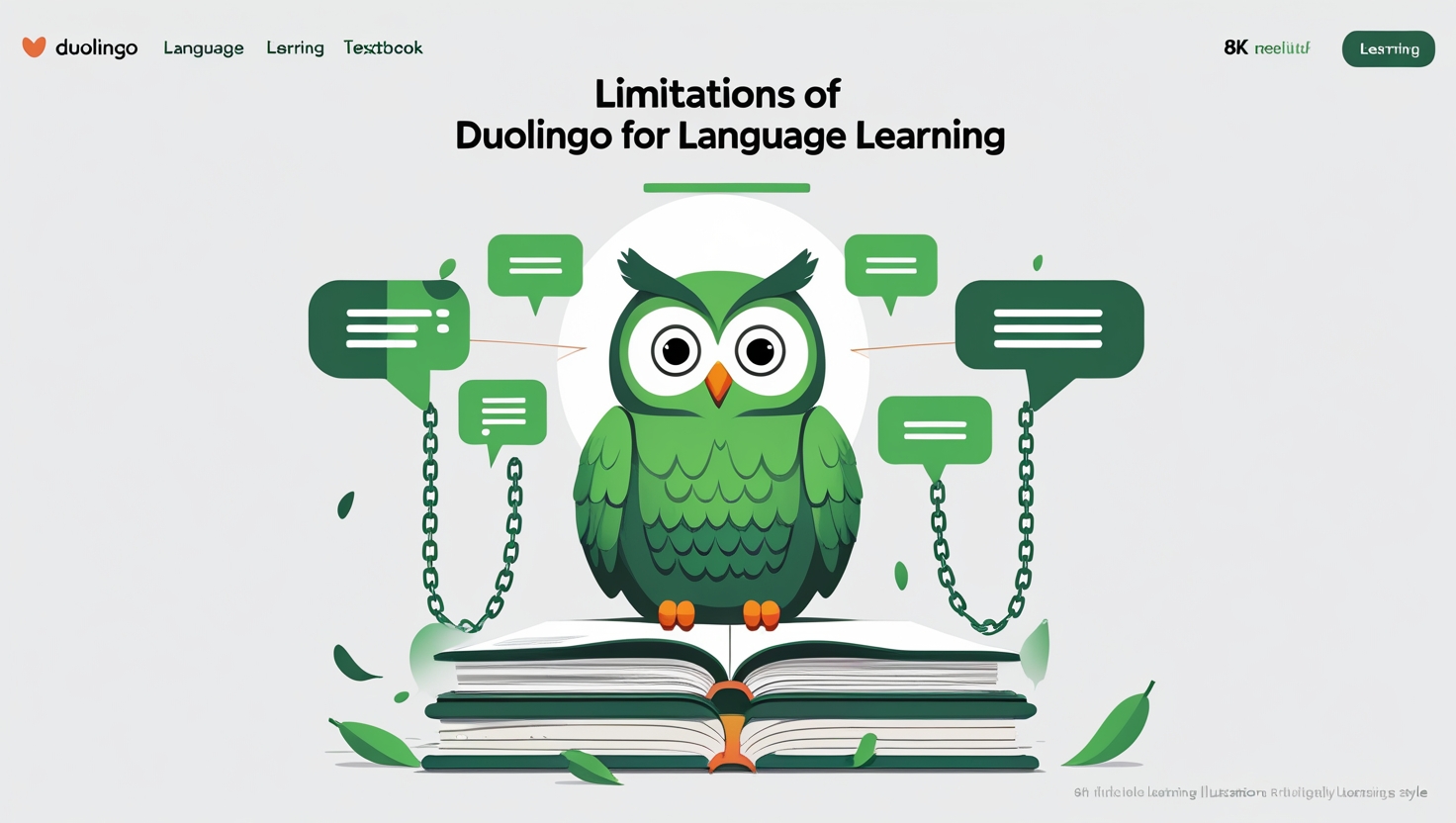
When considering “Does Duolingo Actually Work” for mastering a new language, it’s crucial to acknowledge its limitations. While Duolingo excels at teaching foundational vocabulary and grammar, it struggles with delivering real-world communication skills. This gap is primarily due to restricted conversation practice, cultural nuances, and the inability to fully simulate natural language environments or context-driven dialogue.
Speaking Practice Constraints
Duolingo’s speech exercises focus on pronunciation but lack depth. The app offers limited opportunities for natural conversation practice, fails to provide detailed feedback on real-world speech patterns, and doesn’t enable real-time dialogues. Addressing these constraints is essential for users to transition from rote learning to effective communication, especially for interpersonal or professional language use.
Real-World Application Challenges
The 2024 trends in language education highlight Duolingo’s inability to bridge the gap between app-based learning and practical use. Learners often face challenges with limited cultural context, differences between formal and colloquial expressions, and situational vocabulary mismatches. These barriers make it harder to apply learned concepts confidently in natural conversations or immersive environments.
Best Practices for Success
To ensure that “Duolingo Actually Works” effectively as a learning tool, adopting strategic practices is vital. Incorporating diverse learning resources, maintaining structured study plans, and actively engaging with the language can help mitigate the app’s shortcomings and lead to more balanced language acquisition.
Combine Multiple Resources
Diversify your learning approach to reinforce what Duolingo offers. Pair the app with podcasts, native media, or books for better contextual understanding. Engage with language exchange partners to practice conversational skills and receive real-time feedback. This strategy ensures you learn both formal grammar and practical usage, bridging gaps between app learning and natural dialogue.
Structured Learning Plan
Consistency is the backbone of successful language learning. Establish daily goals to keep pace with your progress. Track achievements over time, review previous lessons, and revisit challenging topics regularly. This structure helps create a steady, measurable path for improvement while utilizing Duolingo as a key resource.
Active Engagement
Interaction drives retention. Speak out loud during lessons to strengthen pronunciation, manually jot down new words and phrases, and practice constructing custom sentences. Such active engagement transforms passive learning into practical mastery, enabling you to maximize Duolingo’s benefits while addressing its conversational limitations.
Language Offerings and Effectiveness
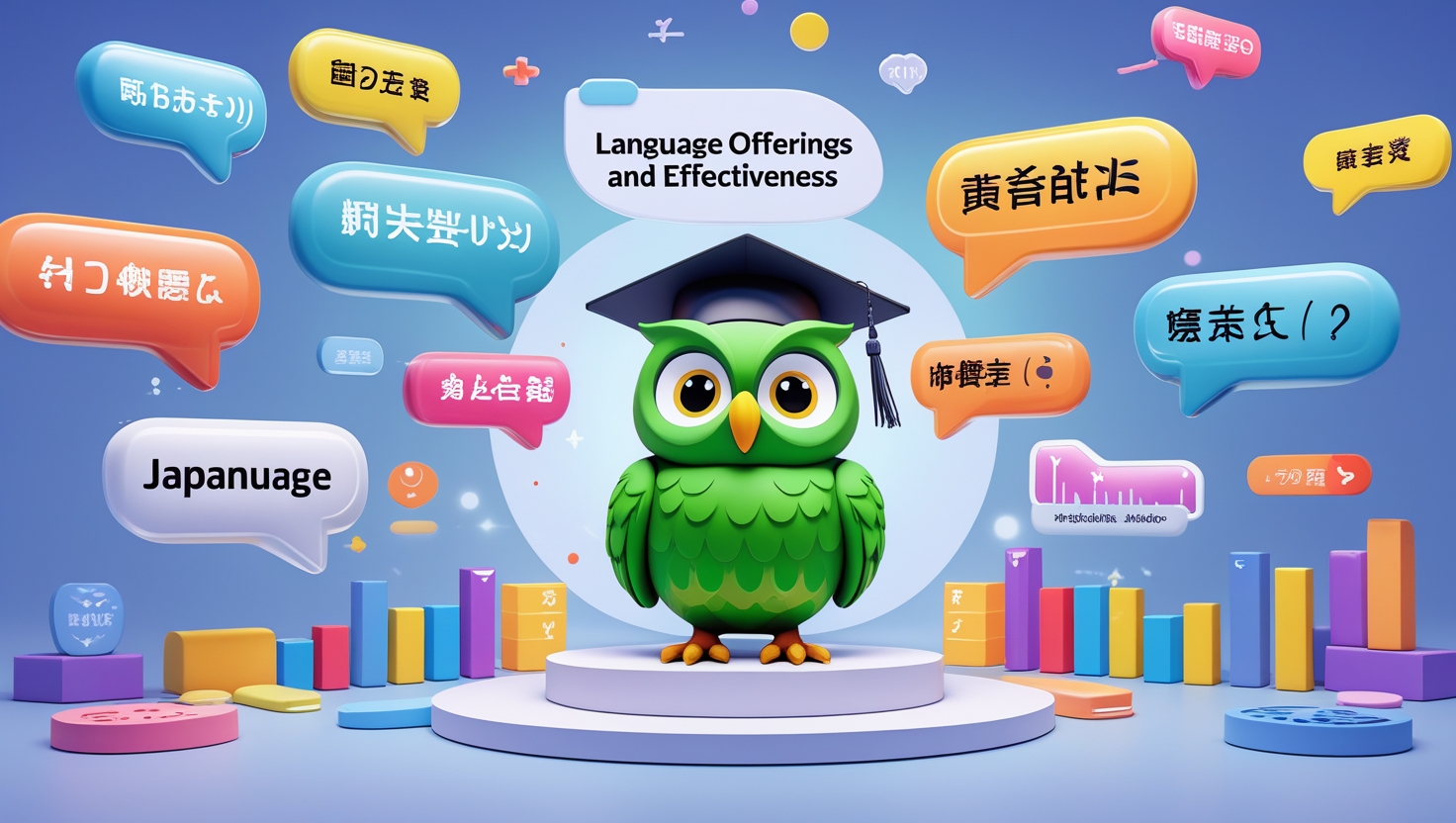
As of 2024, Duolingo offers over 40 languages, including Spanish, French, Japanese, and even unique options like Hawaiian and Navajo. The platform aims to build foundational skills in vocabulary, grammar, and listening comprehension.
But does Duolingo Actually Work for mastering all these languages? While it’s excellent for beginners, advanced learners may find the exercises insufficient for achieving conversational fluency without supplementing with other resources.
Duolingo Course Development Levels
| Category | Languages | Key Features |
| Highly Developed Courses | Spanish, French, German, Italian | – Spanish: Most comprehensive- French: Extensive content- German: Well-structured- Italian: Rich in cultural content |
| Moderately Developed Courses | Portuguese, Russian, Japanese, Chinese | Courses with a good foundation but less extensive than highly developed ones. Ideal for casual learners. |
| Newer Courses | Korean, Arabic, Hindi, Greek | Recently added courses focusing on essential vocabulary and basic grammar for beginners. |
Additional Features Worth Exploring
Duolingo’s additional features, such as Stories, Podcasts, and Events, enhance the learning experience beyond basic lessons. Stories focus on reading and listening comprehension, while Podcasts expose learners to intermediate-level speech.
Events encourage real-world practice by connecting users with native speakers. These tools help make Duolingo Actually Work better when combined with a consistent routine and additional resources like conversation practice or immersion programs.
Stories Feature
- Interactive reading exercises
- Natural dialogue scenarios
- Progressive difficulty levels
Podcast Integration
- Listening comprehension practice
- Real-world context
- Cultural insights
Events and Community
- Group challenges
- Discussion forums
- Local meetups
Comparing Cost Effectiveness
One of Duolingo’s biggest draws is its affordability. The free version includes ads but provides access to almost all lessons, making it ideal for budget-conscious learners. The Duolingo Plus subscription, priced at around $6.99/month, offers ad-free use and extra features. But does Duolingo Actually Work compared to paid apps like Rosetta Stone or private tutors? While cost-effective, Duolingo alone might not deliver the depth needed for professional fluency.
Real User Success Metrics (2024)
Recent data from Duolingo’s user base reveals interesting success patterns, indicating how Duolingo Actually Works in helping users achieve language proficiency. The 2024 statistics show impressive completion rates, achievement milestones, and time investment, highlighting the effectiveness of the platform in real-world usage. These metrics demonstrate how consistent practice and dedication lead to notable language skills growth and success.
Strategic Learning Combinations
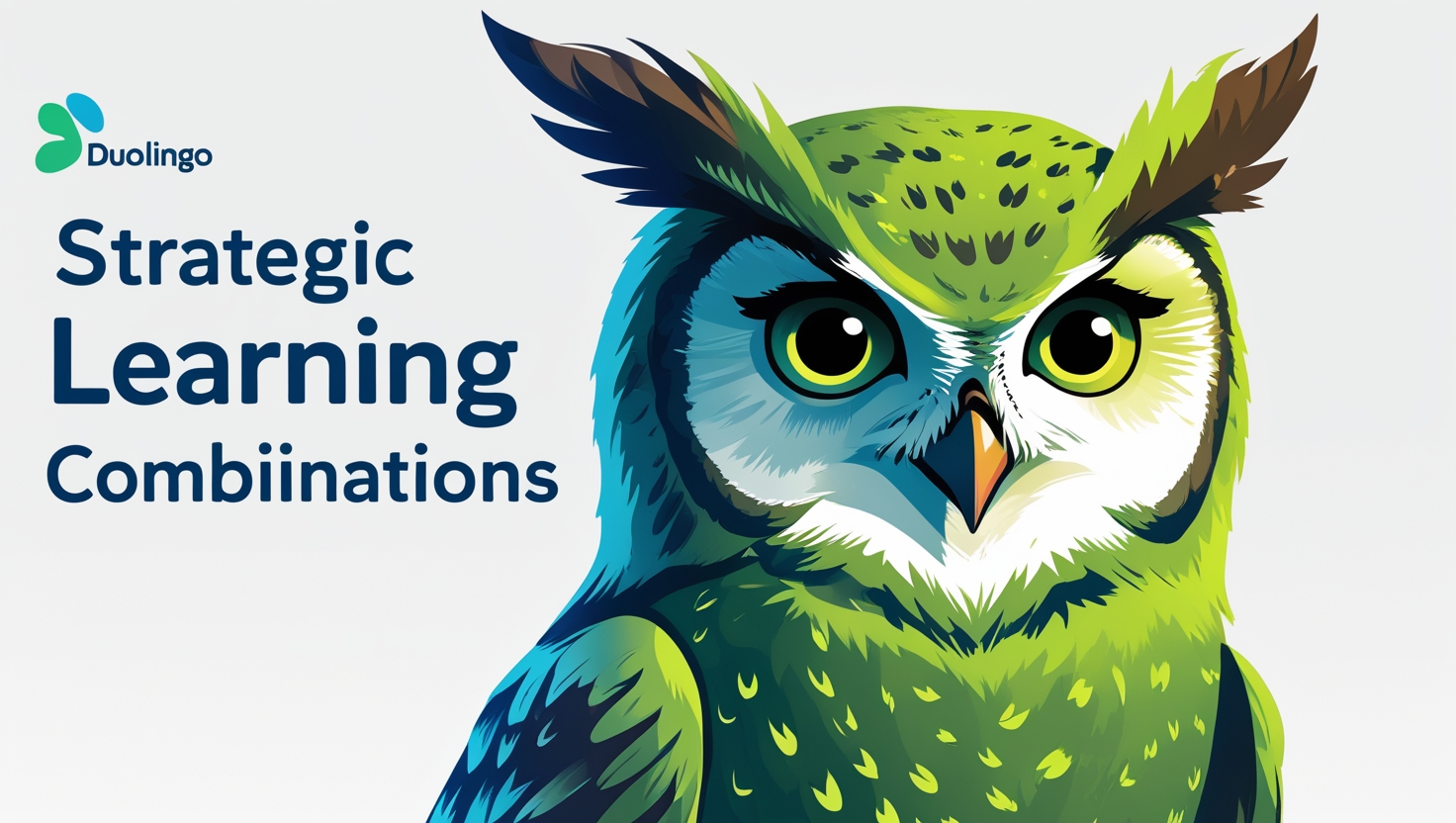
Research shows combining Duolingo with these methods increases success rates:
| Learning Method | Success Rate Increase | Time Investment |
| Daily News Reading | +25% | 10 mins/day |
| Native Podcasts | +30% | 20 mins/day |
| Language Partners | +45% | 30 mins/week |
| Netflix in Target Language | +35% | 2 hours/week |
Professional Development Impact
Can Duolingo Actually Work for professional purposes? While Duolingo helps develop basic reading, writing, and listening skills, it falls short in preparing learners for professional-level fluency. Speaking practice is limited to repeating phrases rather than engaging in open-ended dialogues. For job-related language mastery, learners should pair Duolingo with targeted resources like specialized courses or one-on-one tutoring tailored to industry needs.
Career Benefits
Recent surveys indicate that language learners using Duolingo Actually Work tend to have a significant advantage in the job market. Duolingo users experience a 15% higher chance of being placed in international roles, a 23% increase in the likelihood of getting cross-cultural project assignments, and a 28% improvement in their performance when communicating in global teams. This data suggests that Duolingo Actually Work to improve both your personal and professional life.
Industry Recognition
Duolingo Actually Work is not only well-regarded by individual learners, but also recognized by major industries. In the Tech Sector, 67% of employers view app-based language learning favorably. Within Global Business, 54% of multinational companies accept app-based language certificates. In Education, 41% of universities have started recognizing the achievements from digital language learning platforms like Duolingo as legitimate credentials, further proving that Duolingo Actually Work.
Psychological Benefits
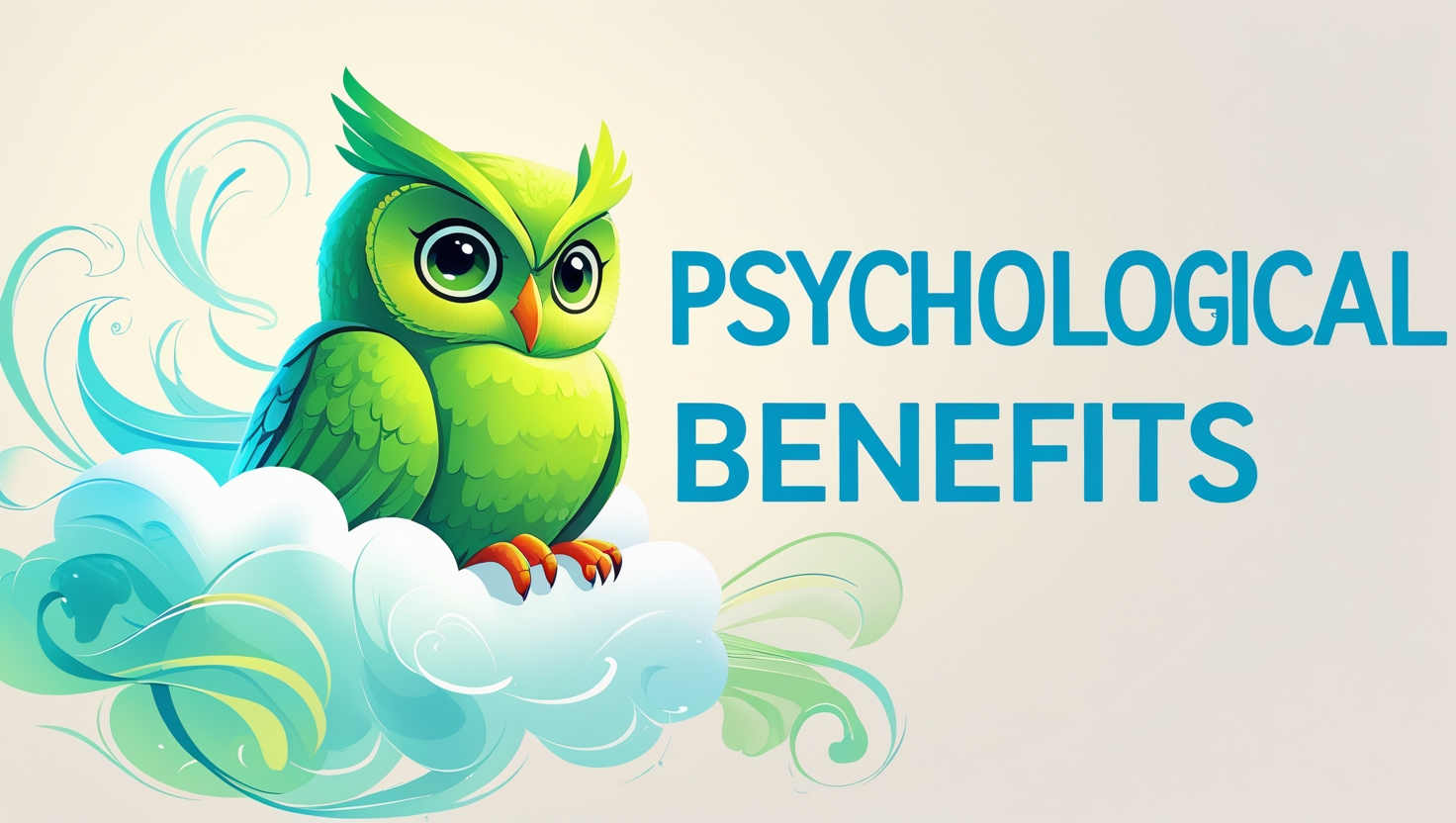
Research from cognitive science reveals Duolingo users experience:
- Increased Confidence: 78% report higher confidence in cross-cultural situations
- Mental Agility: 45% improvement in cognitive flexibility
- Cultural Awareness: 65% better understanding of cultural nuances
Advanced Learning Strategies
For those looking to maximize their results, adopting advanced learning strategies can make Duolingo Actually Work more effectively. Consistent daily practice is key, but combining Duolingo with shadowing techniques, conversation partners, and multimedia exposure can take your skills further.
For example, watching French films or joining Spanish language meetups reinforces lessons while building fluency. Advanced learners benefit from diverse methods to deepen their understanding and conversational abilities.
Immersion Techniques
Duolingo actually works by leveraging immersion techniques to enhance language learning. You can create a full immersion environment by changing your device language settings to your target language and using computer interfaces in the same.
Media consumption is vital—watch movies with subtitles and listen to music in the new language. Additionally, incorporate daily habits like labeling household items and keeping a diary in the target language.
Progress Tracking Methods
Modern learners can optimize their progress using various methods. Digital progress maps help in tracking milestone achievements effectively. Skill assessment tools provide regular proficiency tests to gauge learning. Performance analytics enable learners to monitor their weak areas and strengths, ensuring focused improvement. These tools together offer a comprehensive approach to track and enhance learning outcomes efficiently.
Future of Language Learning with Duolingo

The future of Duolingo looks bright, with continuous updates and a focus on expanding its language catalog. By 2025, we could see improved AI-driven speech recognition and more tailored exercises for advanced learners.
But will Duolingo Actually Work as a standalone tool for language mastery? Likely not, as fluency often requires immersion and active practice. However, it remains a valuable supplement to broader learning strategies.
Upcoming Features (2024-2025)
Duolingo has announced several enhancements:
- AI Conversation Partners: Real-time dialogue practice
- Virtual Reality Immersion: Simulated cultural experiences
- Personalized Learning Paths: AI-adapted lesson sequences
- Professional Certification: Industry-recognized qualifications
Integration with Educational Systems
Integration with Educational Systems is becoming a significant focus for Duolingo, with growing partnerships in diverse sectors. Some universities now accept Duolingo for credits, recognizing its foundational value. For businesses, corporate training solutions help employees learn industry-relevant languages.
Does Duolingo Actually Work for Professional development? While effective for basics, its industry-specific modules need supplementation for advanced fluency, especially in technical fields.
Making Language Learning Sustainable
To make language learning sustainable, building a consistent habit is crucial. Using Duolingo daily for 15–20 minutes is manageable for most people. But does Duolingo Actually Work long-term?
Success depends on how well you integrate the app with real-world practice, such as joining language exchanges or using your target language in everyday scenarios. Sustainability thrives on motivation, so celebrating milestones and keeping realistic goals can help.
Long-term Success Factors
To ensure long-term success in language learning, sustainability elements play a crucial role. But does Duolingo Actually Work for this purpose? Combining the app with community engagement—such as joining language exchange groups, participating in virtual meetups, and engaging in online forums—can enhance its effectiveness.
Additionally, setting SMART goals with milestone markers and reward systems, along with documenting progress through learning journals and tracking vocabulary growth, ensures consistent improvement.
Avoiding Common Pitfalls
Prevent learning plateaus by:
- Rotating learning methods every 3 months
- Challenging yourself with new content types
- Engaging with native speakers regularly
- Reviewing and revising learned material
Resource Integration Guide
Pairing Duolingo with complementary resources ensures comprehensive learning. For instance, reading children’s books in your target language or practicing with apps like HelloTalk can strengthen skills.
To make Duolingo Actually Work, focus on areas where it falls short, such as speaking and writing, by adding conversation practice or journaling. A well-rounded approach combining multiple tools and methods leads to the most effective results.
Complementary Tools
To enhance your Duolingo learning, integrate complementary tools tailored to specific skills. Use grammar apps for detailed explanations and conduct a weekly review to reinforce concepts. Boost retention with vocabulary apps for specialized terms through daily practice. For speaking, leverage conversation apps with bi-weekly sessions. Finally, strengthen writing skills by crafting monthly essays with dedicated composition tools.
Conclusion
While Duolingo proves to be an effective tool for building fundamental language skills, its success largely depends on how it’s utilized. The platform excels in teaching basic vocabulary, grammar, and reading comprehension through its gamified approach. However, achieving true language fluency requires combining Duolingo with supplementary resources, real-world practice, and consistent engagement. When used as part of a comprehensive learning strategy, Duolingo serves as an invaluable foundation for language acquisition in 2025.
Visit For More Blog’s: duolingoabout.com

Welcome to DuolingoAbout.com! Your go-to hub for expert tips, tricks, and guides to mastering Duolingo. Simplify your language-learning journey with curated content designed for learners at all levels.
